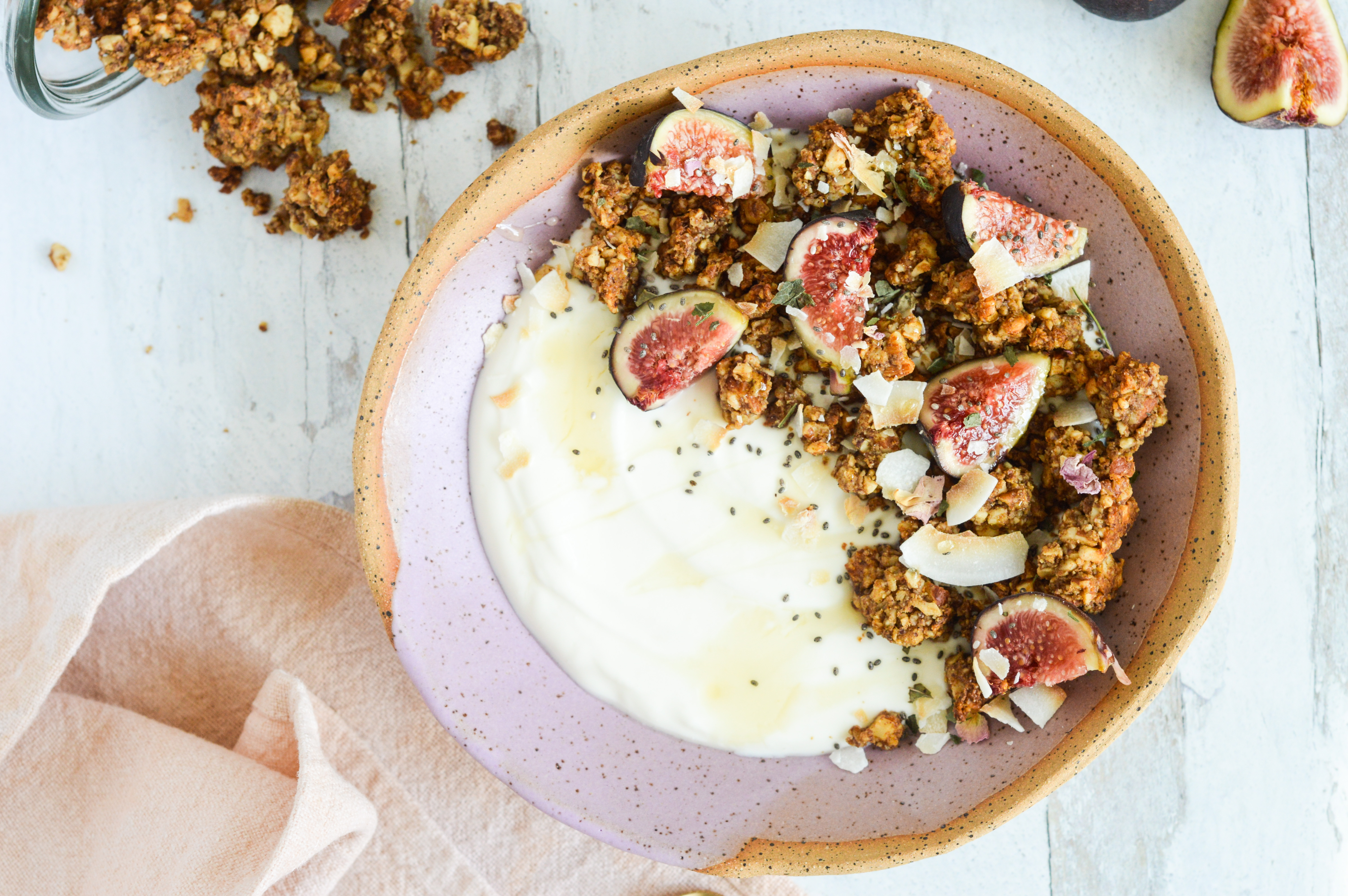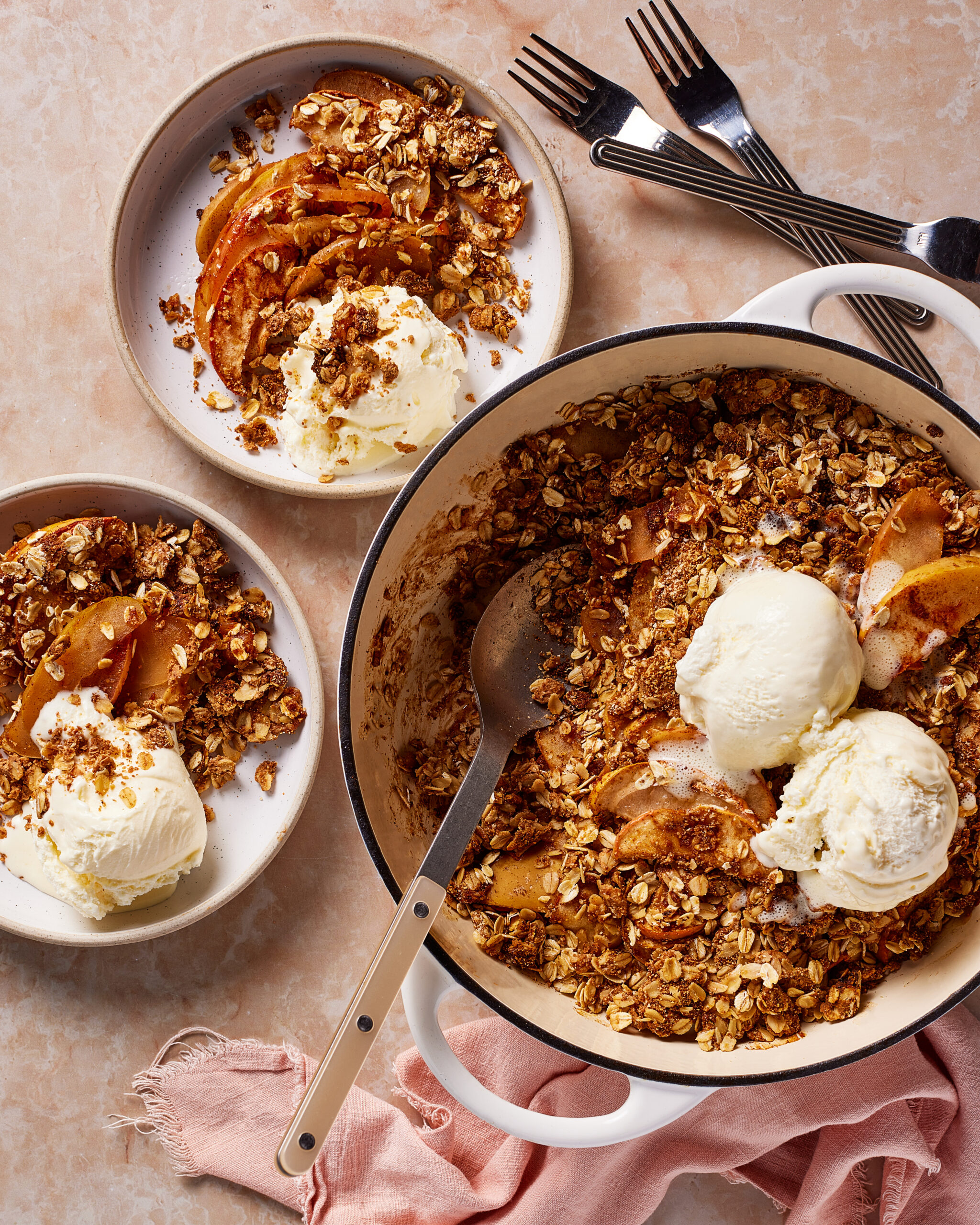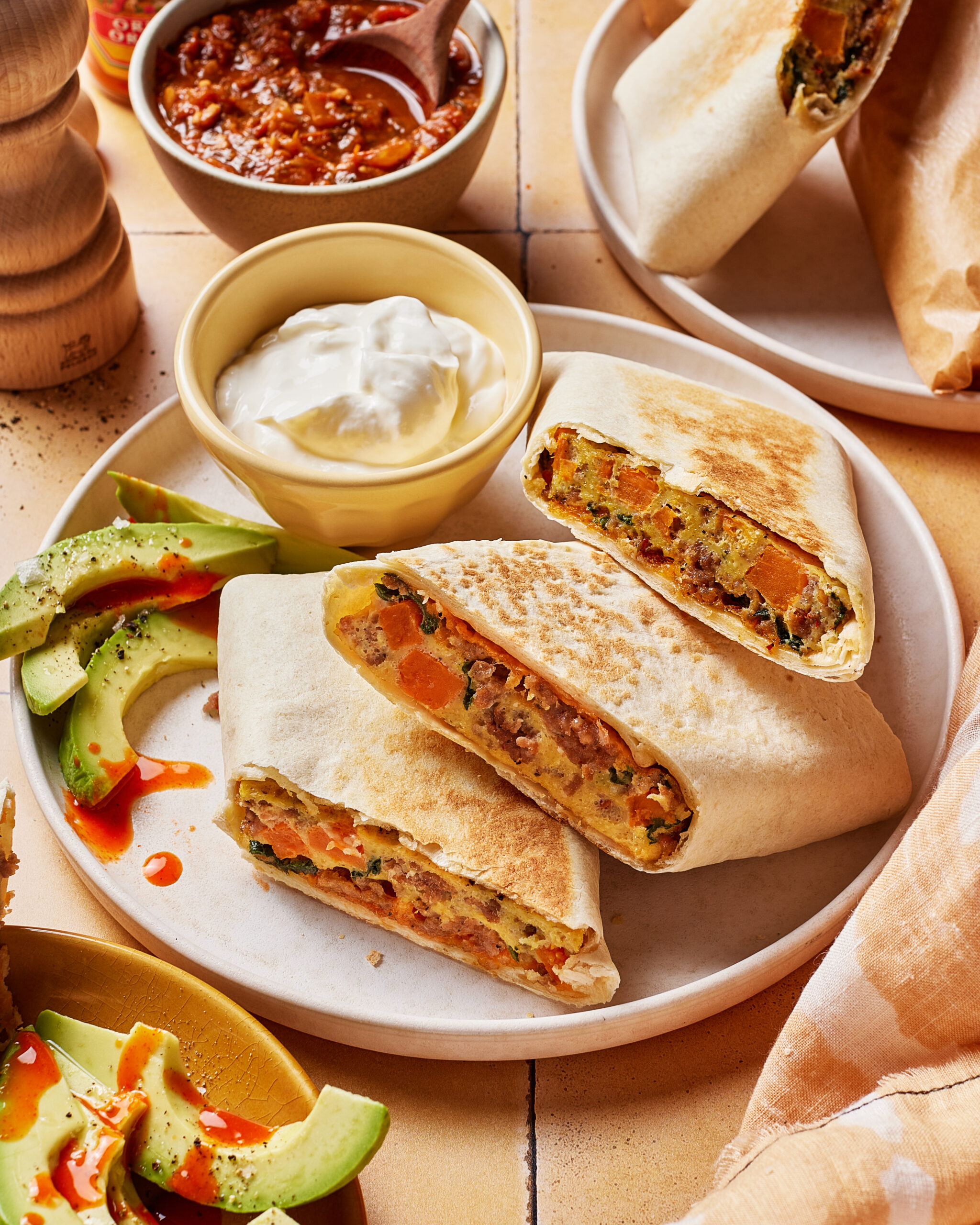recipes
lifestyle
wellness
motherhood
mindset
About
E-Books
Blog
Freebies
partnerships
hi, i'm lauren!
hey there!
I’m on a hot mission to help you balance your hormones & live your best life.
categories
Home
Quiz
Get In Touch
The Course
search:
Cookbook
Recipe key
GF
VG
P
Vegan
Gluten Free
Paleo
DF
Dairy-Free
download now
Join Hormone Healthy Eats!
Become a SFNSG insider to get my monthly Substack, Hormone Healthy Eats! Packed with the latest hormone-healthy recipes
+ tips.
jump to recipe >
REAL TALK — The average American adult consumes 22 teaspoons of sugar per day, with children consuming up to 32 teaspoons of sugar per day!
With the recommended daily intake (RDI) being no more than 6 teaspoons per day (25g or less) it’s clear as a country we’re consuming A LOT of sugar, and by now most of us know that’s not such a great thing.
While sugar makes things taste delicious (my sweet tooth is unstoppable), over-indulging in it is extremely easy to do these days (with added and refined-sugars popping up in the majority of food products), and too much intake can disrupt your gut bacteria and hormone-balance.
But because I’m not an advocate for restriction or deprivation (rather adding in more of the good stuff) today’s post includes a delicious swap for one of my (and possibly your) fave “health” foods that happens to be loaded with sugar — granola.
Read on for how sugar impacts your hormones, easy tips to balance blood sugar and a better-hormone-balancing (plus delicious and seasonal) pumpkin spice granola cluster recipe.
PS — Wondering if you have a hormone imbalance? Take this quiz to learn more.
HOW SUGAR DISRUPTS YOUR HORMONE BALANCE
A diet high in refined or added sugars and processed carbohydrates increases inflammation and insulin production in the body, which is linked to hormonal imbalances such as PCOS, PMS, Thyroid Hormone Imbalance and Gestational Diabetes.
High insulin levels can also cause a woman’s ovaries to produce more testosterone, preventing them from releasing an egg during ovulation (known as an-ovulation), which can result in infertility.
On the flip side, too much insulin can cause a woman’s body to convert too much testosterone to estrogen, leading to estrogen dominance, which is linked to PMS, fibroids, endometriosis, mood swings, heavy periods, low libido and bloating.
Elevated insulin also drives up the production of stress-hormone cortisol, which depletes other hormones like progesterone, a calming and relaxing hormone vital to menstruation, ovulation and fertility.
As you can see, too much sugar = increase in insulin production = elevated testosterone, estrogen and/or cortisol = hormonal imbalances and a host of underlying symptoms to deal with.
BLOOD SUGAR BALANCERS
Okay, so it’s clearly beneficial to our hormones to limit our overall sugar intake (insert sad face emoji), but here’s where it gets good — there are plenty of nutrients and healthy habits you can easily add into your lifestyle to balance out *some* of that sugar. Here’s a few of my (and my client’s) faves:
+ Quality Protein + Fat
Protein and fat are slow energy sources for the body, as they have to go through the process of being broken down in order to be used, which allows your body time to efficiently burn it as energy. This paleo pumpkin granola cluster recipe incorporates plenty of protein and fat-rich nuts and seeds to balance out the any potential blood sugar spikes from the maple syrup.
+ Magnesium
It’s thought up to 90% of Americans have low levels of magnesium, which is an “anti-stress” mineral that regulates over 300 biochemical reactions in our body, including sugar cravings. Magnesium is primarily found in nuts, seeds, leafy greens and dark chocolate, so you’ll get plenty of it in this recipe!
+ Curcumin
The anti-inflammatory active ingredient in turmeric, this spice helps to decrease inflammation in muscle cells, indirectly helping to combat high insulin levels. You can try adding a teaspoon of turmeric to this recipe for a pumpkin/golden milk flavor, or get a dose from one of my favorite cozy soups.
+ Vitamin D3
This vitamin is essential to blood sugar management. It helps to control stress at a cellular level (elevated stress = elevated insulin and vice/versa) and helps to treat depression, which is a significant factor in metabolic syndrome. I recommend getting blood levels tested prior to taking, so you can tailor your dose to your deficiency (and prevent toxicity). 2000 IU’s is a good maintenance dose, but you may need to increase to 5000 during winter, especially if you live in the PNW like me 🙂
+ Cinnamon
Cinnamon promotes optimal blood sugar balance by making your insulin receptors more responsive so that they’re able to absorb more energy into your muscles (instead of remaining in your blood stream, causing insulin to elevate). It’s also rich in antioxidants to decrease inflammation in your body. This recipe naturally incorporates cinnamon, but you can also try adding some to your oatmeal, smoothies or coffee.
+ Chromium + Berberine
These minerals can increase insulin sensitivity and weight loss, while decreasing inflammation caused by fatty tissue. ***I highly recommend consulting with a licensed medical practitioner and getting your blood sugar levels tested before taking, as these can interfere with some medications and antibiotics.
+ Inulin Fiber
This prebiotic fiber feeds the beneficial bacteria in your gut, which uses the fiber to reproduce and enhances your microbiome’s ability to make more nutrients, optimize digestion and relieve constipation, metabolize fats, regulate blood sugar, manage inflammation and decrease risk factors like obesity, type 2 diabetes and metabolic syndrome. Adding this powder supplement to the granola (as well as smoothies, bliss balls, etc.) is an easy way to get your RDI.
+ Sleep
Lack of sleep increases insulin resistance, and research has shown for every hour less than 8 hours of sleep is 3 pounds of weight is added. Less restorative sleep also ramps up production of your appetite-inducing hormone ghrelin, while lowering your appetite-suppressing hormone leptin, so you tend to eat more and crave more sugar and carbs. Try adding in a nightly wind down routine/ritual to get a better night’s sleep.
SIMPLE SUGAR SWAPS/TIPS
While you can read this post to get a full-scoop on some of my fave low-sugar swaps, I will say my personal preference is to use real and unrefined forms of sugar, as close to their whole foods state as possible in recipes.
I do not use artificial sweeteners or sugar alcohols (including stevia), which have been linked to a number of gut conditions and imbalances, and are 250-300 times sweeter than table sugar, tricking your taste buds into preferring intensely sweetened food.
A few of my favorite natural sugars include —
+ organic maple syrup
+ organic raw honey
+ dates
+ banana
+ coconut sugar
+ cinnamon
+ applesauce
Keep in mind, these are still forms of sugar meaning they will still elevate your insulin levels, which overtime can lead to a hormone imbalance. That being said, they do provide some antimicrobial, antibacterial and trace mineral properties, and when combined with the blood-sugar-balancers above, can be an optimal way to satisfy your sweet tooth.
A BETTER OPTION — THESE PALEO PUMPKIN GRANOLA CLUSTERS
While granola is delicious and seems “healthy” in theory, many brands on the market contain inflammatory oils and a ton of added sugars (some upwards of 14g (1/2 your RDI) per serving).
Add onto that the average consumer eats 2-4x the recommend serving size, and that makes for a hefty dose of hormone-disrupting sugar in breakfast alone!
Enter in these Paleo Pumpkin Granola Clusters, which are refined-sugar-free, naturally sweetened with spices and maple syrup, have only 5g of sugar per serving, and contain plenty of nutrients, protein, fat and fiber (derived from the nuts, seeds, spices and inulin) to help balance your blood sugar and hormones.
Plus, they are insanely chunky, clustery, delicious and easy to make. I love using them to top yogurt or smoothie bowls, cauliflower oats and fall crisps.
Happy baking!
xx //
Lauren
Paleo Pumpkin Spice Granola Clusters
These delicious, refined-sugar-free paleo pumpkin spice granola clusters are an optimal swap for the typically sugar-laden cereal, helping to naturally balance your blood sugar and improve hormone balance.
|
PREP TIME: |
TOTAL TIME: |
|
00:00 Mins |
00:30 Mins |
Author: Lauren Chambers
Servings: 8
Recipe Type: breakfast, dessert, snack
Cuisine: American
Ingredients
- 1 cup organic raw cashews
- 1 cup organic raw macadamia nuts or almonds
- 1 cup organic raw pecans or walnuts
- 1 cup unsweetened coconut flakes (not shreds)
- 1/3 cup organic unsweetened pumpkin puree
- 1/3 cup organic maple syrup
- 1/4 cup Ground Up Cinnamon Snickerdoodle Nut Butter (or other nut butter of choice) *Use code SOFRESH15 to save 15% off your first purchase*
- 2 tbsp coconut oil, melted
- 2 tsp pumpkin pie spice
- 1 tsp vanilla extract
- 1/2 tsp cinnamon
- 1/2 tsp sea salt
- Optional — 2 scoops Bulletproof Innerfuel Prebiotic Fiber
Instructions
- Preheat your oven to 325 degrees and line a large baking sheet with parchment paper.
- Place nuts and coconut flakes in a food processor and pulse until it chops them into a crumbly texture (you want it a bit chunky and not over-mixed).
- Once pulsed, add nuts to a large mixing bowl and stir in spices and optional prebiotic fiber.
- In a separate bowl, whisk together the pumpkin puree, cashew butter, coconut oil, maple syrup and vanilla until creamy and smooth. Pour this mixture over the dry ingredients and stir until evenly coated.
- Spread the mixture in a single layer on the parchment-lined baking sheet. It will be clumpy, do not break it up. The clumpier it is the more “chunky” it will be.
- Bake in the oven at 325 for 15 minutes, then remove to gently stir. Do not heavily mix, unless you want smaller chunks, try to keep as in tact as possible.
- Return to the oven for another 10 mins until browning. Option to broil an additional 1-2 minutes if still not quite brown.
- Remove from oven and allow to cool at room temp (this is when it will crisp). Serve on yogurt or smoothie bowls, oat bakes or desserts. Store in an air tight container at room temp for up to two weeks.
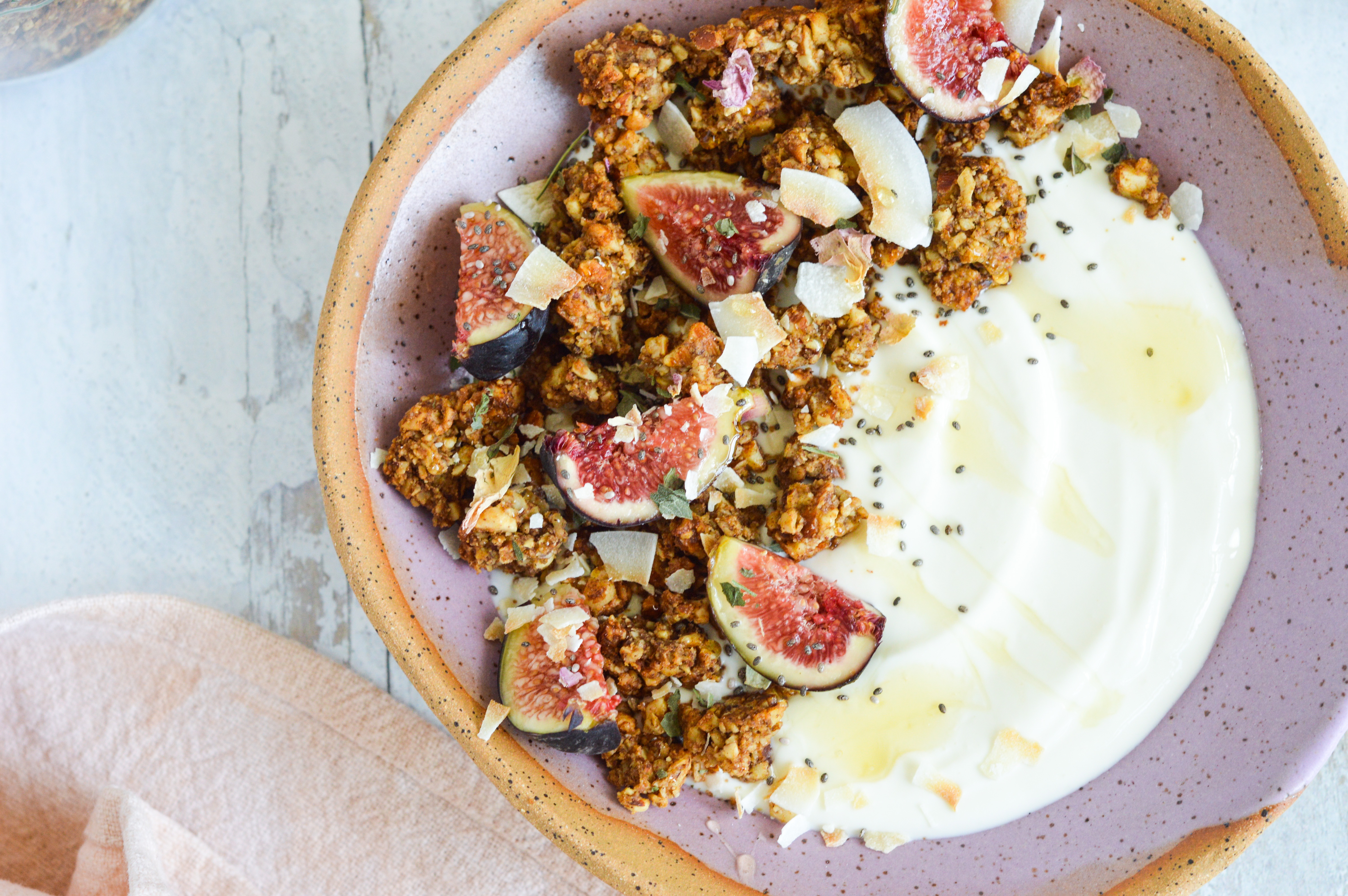
If you loved that...

01.
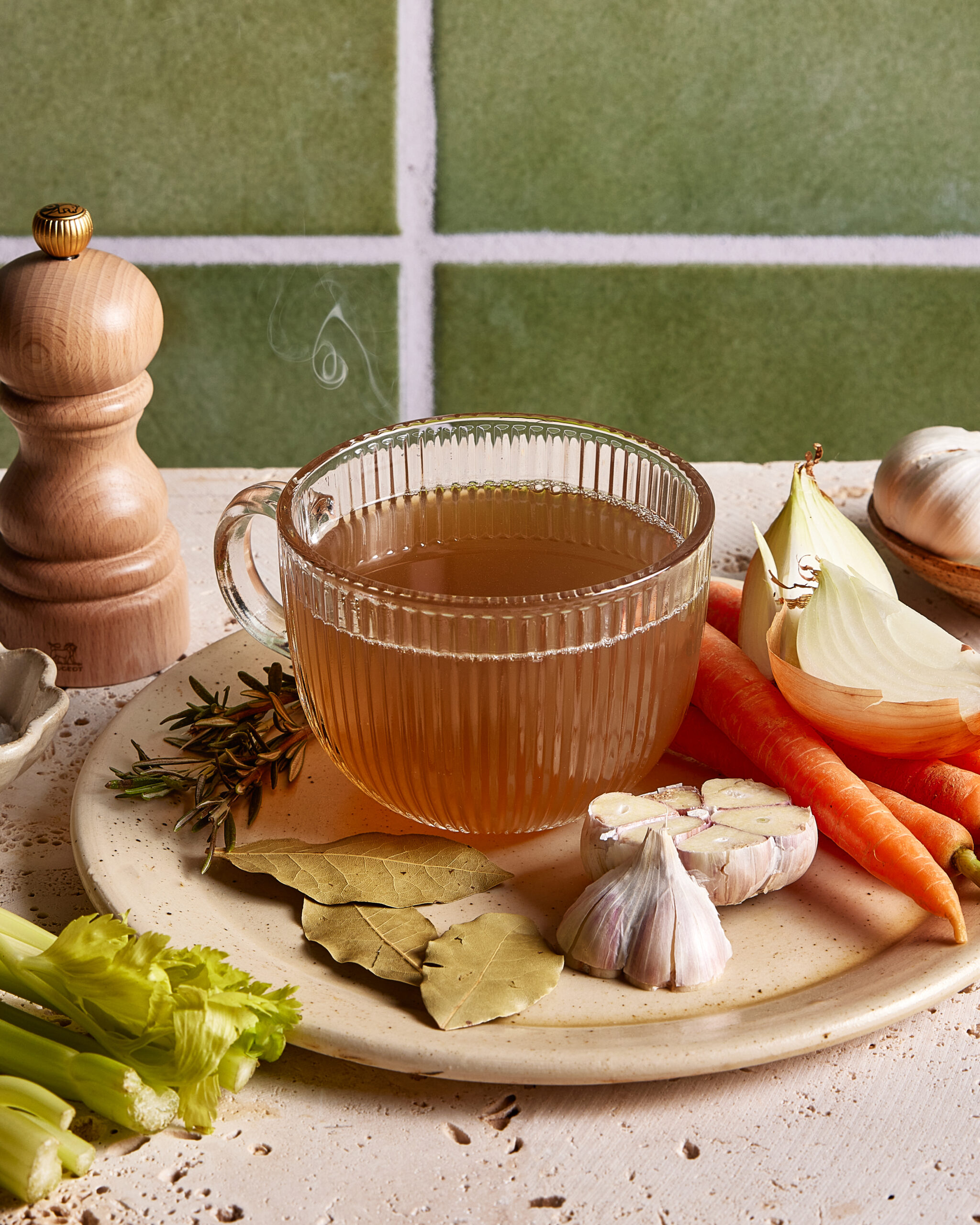
02.
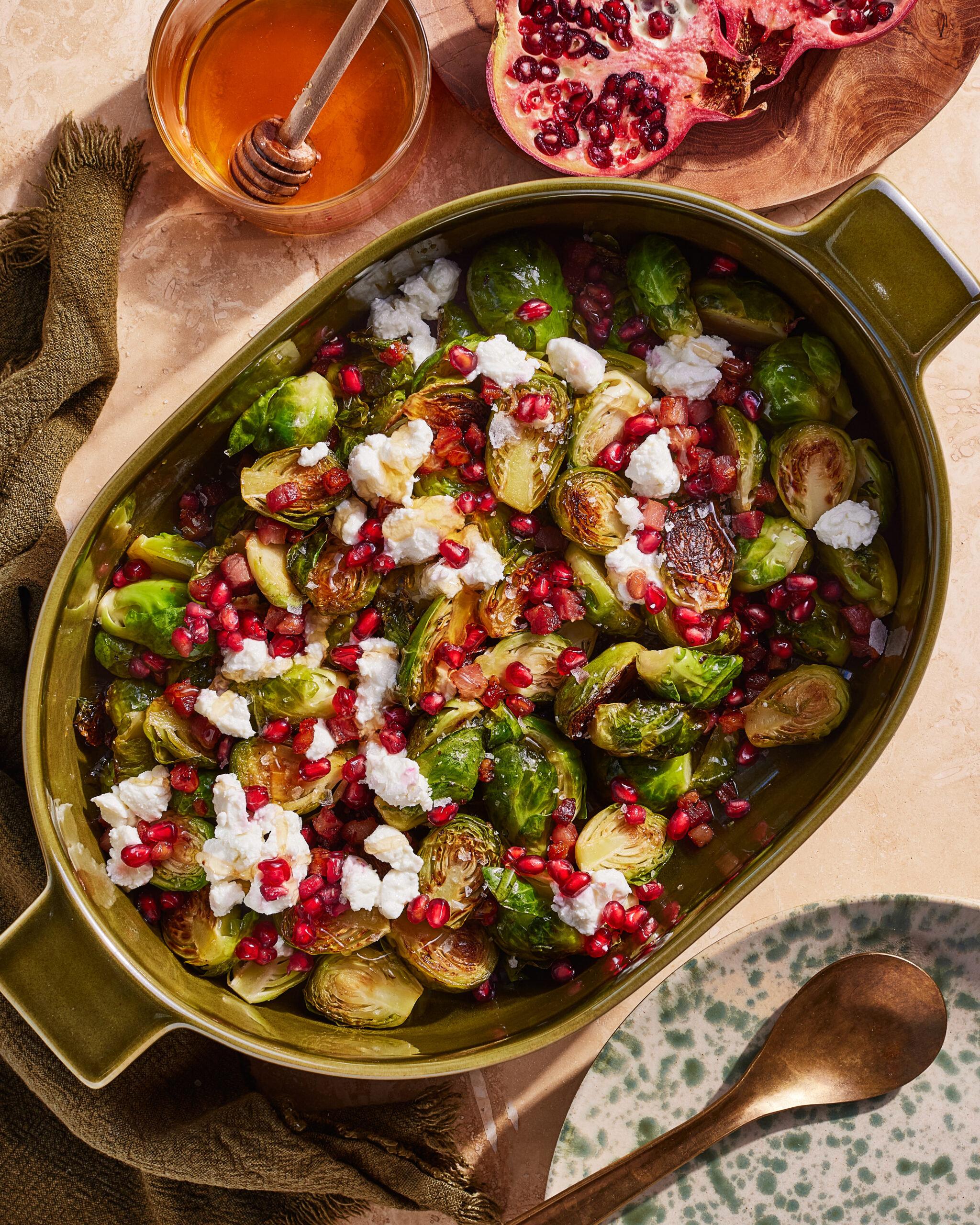
03.
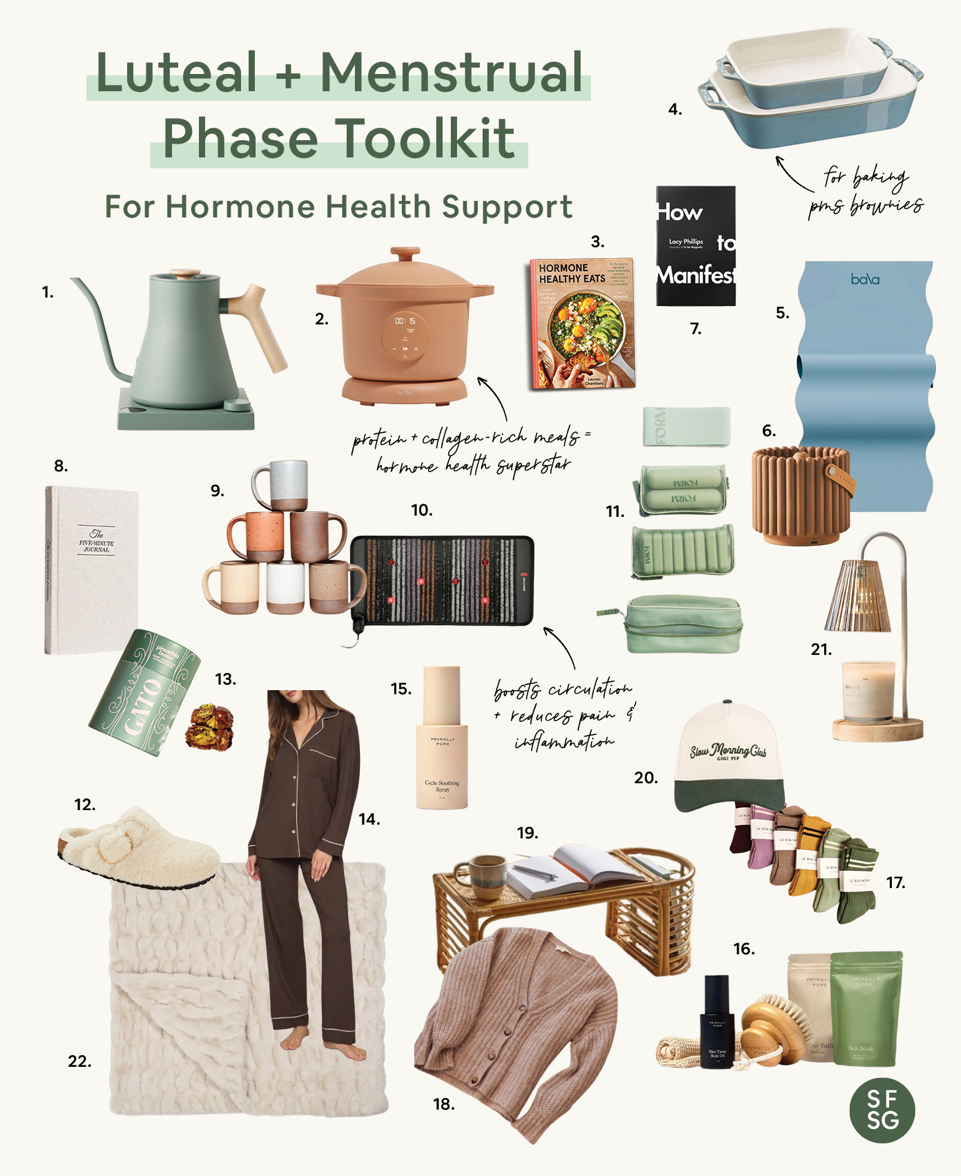
04.
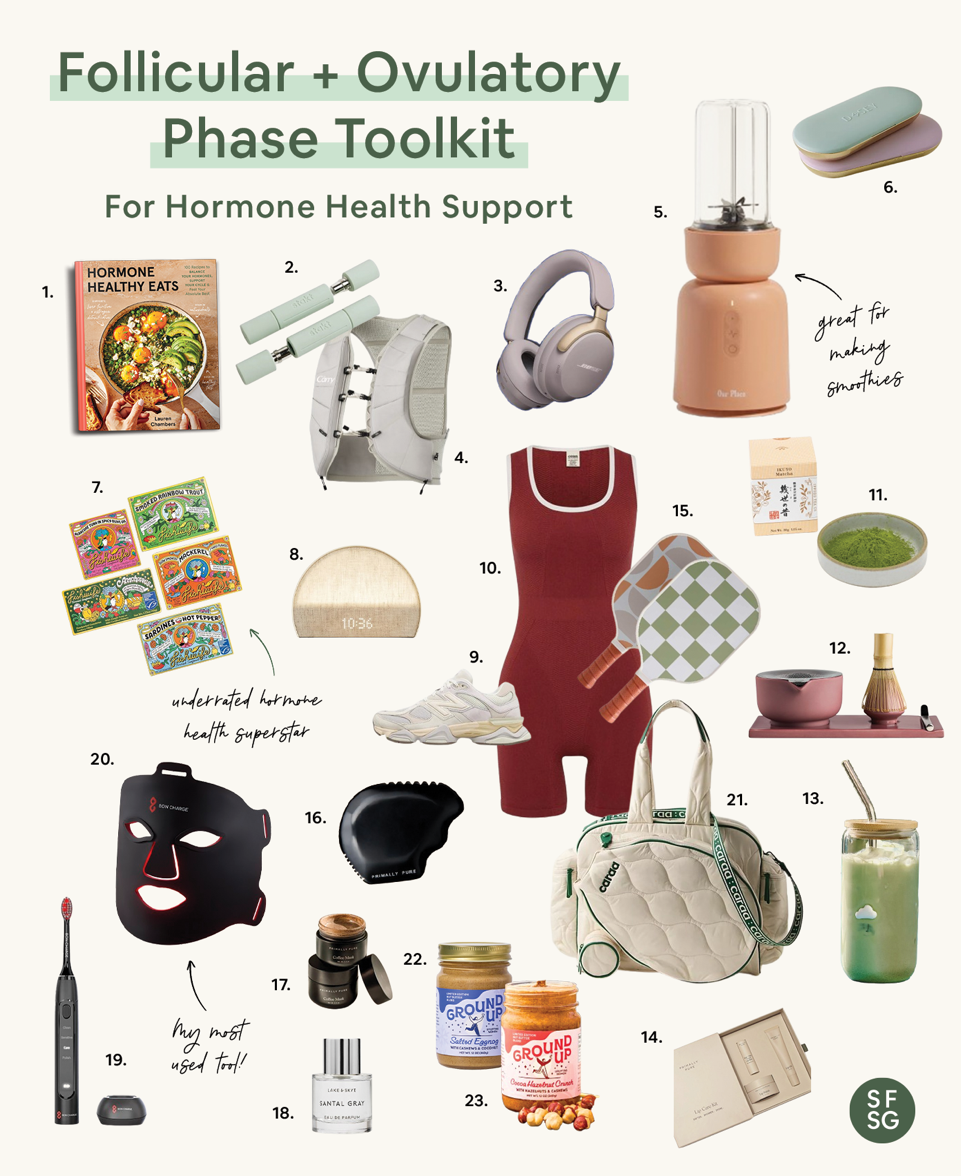
05.
hey!
Keep Browsing
Site
Keep Browsing
Site
the
about
e-books
blog
downloads
quiz
Welcome friend, I'm lauren.
I’m honored to support you on your journey to optimal hormone health + happiness. Thanks for being here babe.
